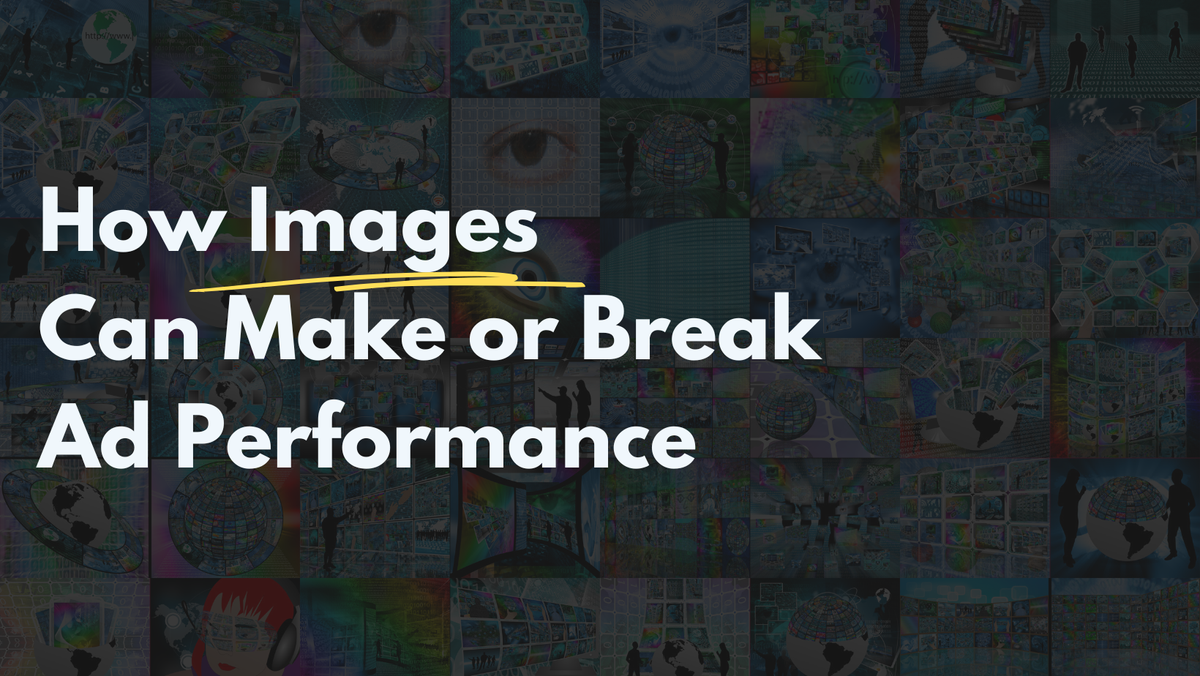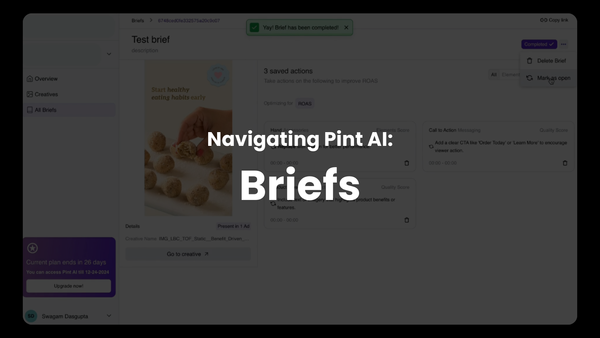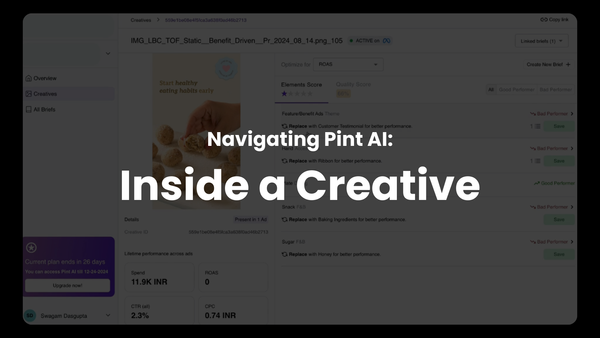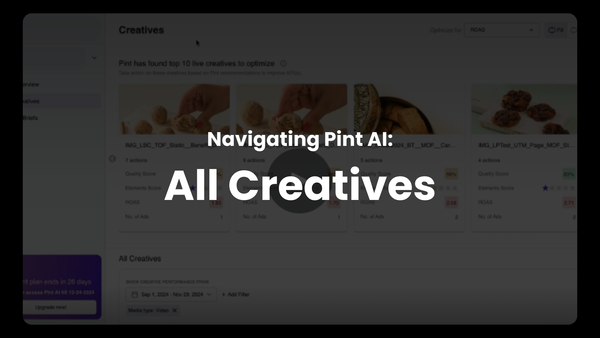Creative Analytics 104: How Images Can Make or Break Ad Performance
It's obvious that using good images in the right context can boost ad performance. But how exactly can you decide which image to use?

It's obvious that for any digital forum, visual content plays a crucial role in capturing audience attention, driving engagement, and ultimately influencing purchasing decisions.
The use of imagery in digital ads can greatly influence their performance; here's how.
Increased Engagement
One of the most significant benefits of using high-quality and relevant images in digital ads is the increased engagement they generate.
Visual content is processed faster by the human brain than text, making it more likely to capture attention quickly.
Take a look at this for example; according to Microsoft Advertising, ads that incorporated high-quality images from Shutterstock saw a 21% increase in clicks and a 7% higher click-through rate (CTR) compared to those without such images.
Improved Trust and Authenticity
Imagery in digital ads also plays a crucial role in building trust and authenticity. Consumers are more likely to engage with and support brands that use genuine and inclusive imagery.
Research shows that 72% of people are more likely to support brands with authentic advertising. Moreover, inclusive ads that represent diverse groups saw a significant lift in purchase intent. For instance, ads that were deemed 'most inclusive' experienced a 23-point lift in purchase intent.
Higher Conversion Rates
The ultimate goal of any ad campaign is to drive conversions. Digital ads that effectively use imagery to create a strong visual appeal often see better conversion rates.
Creative testing, such as A/B testing, helps identify which images resonate most with the audience and lead to higher conversions. By testing different visual elements, marketers can optimize their ads for better performance【9†source】.
Tools, like what we're building at Pint AI, can help you figure out how one image is doing across all your ads, across all your platforms, and then compare its performance with other images. This makes testing really easy.
Interested? Sign up for our waitlist here

Enhanced Ad Recall and Recognition
Visual elements in digital ads can significantly enhance ad recall and brand recognition. Consumers are more likely to remember and recognize ads that use striking and relevant images.
This increased recall can lead to better brand awareness and customer retention over time.
Best Practices for Using Imagery in Digital Ads
1. Use High-Quality, Relevant Images
The quality of the images used in digital ads is paramount. High-resolution images that are relevant to the ad’s message and the target audience can significantly improve engagement.
Avoid using low-quality, pixelated images, as they can detract from the ad’s effectiveness and damage the brand’s credibility.
2. Incorporate Inclusive and Authentic Imagery
Consumers are drawn to ads that reflect diversity and authenticity. Inclusive imagery, which represents a wide range of demographics, can resonate more deeply with audiences.
Ensure that your ads feature real people in genuine scenarios rather than staged or stereotypical representations.
This approach not only builds trust but also fosters a stronger connection with potential customers.
3. Leverage Creative Testing
To determine the most effective imagery for your digital ads, implement creative testing. A/B testing, where two versions of an ad are compared with one differing element, can help isolate the impact of a single variable on ad performance.
Multivariate testing, which analyzes multiple variables within various ad elements simultaneously, can provide deeper insights into what combination of visuals works best.
4. Utilize Data-Driven Insights
Leveraging analytics tools to monitor and analyze ad performance is essential. Metrics such as impressions, CTR, and engagement rates provide valuable insights into the effectiveness of your imagery.
Regularly analyzing these metrics allows for data-driven adjustments, ensuring that the imagery used in your digital ads continues to drive optimal results.
5. Align Images with Brand Identity
Ensure that the images used in your ads align with your brand identity and message. Consistency in branding across all marketing channels, including digital ads, helps build a cohesive and recognizable brand presence. This consistency enhances brand trust and loyalty, which are crucial for long-term success.
6. Optimize for Mobile
With the increasing use of mobile devices, it’s essential to optimize your ad images for mobile viewing. Ensure that your images are clear, engaging, and load quickly on mobile devices.
This optimization enhances the user experience and increases the likelihood of engagement and conversion from mobile users.
Did You Know?
Research by Microsoft Advertising highlighted the impact of inclusive imagery on purchase intent.
Ads that featured diverse representations across age, gender, ethnicity, and abilities saw a significant increase in purchase intent, with the most inclusive ads experiencing a 23-point lift.
This case study underscores the importance of using inclusive imagery to build trust and drive conversions.
Future Trends in Digital Ad Imagery
Adoption of AI and Machine Learning
Artificial Intelligence (AI) and machine learning are increasingly being integrated into digital advertising. These technologies enable more sophisticated targeting and personalization, allowing ads to be tailored to individual user preferences and behaviors.
AI-driven analytics, like what Pint AI is building, can also provide deeper insights into ad performance, leading to more effective ad strategies.
Focus on Video Content
Video content continues to dominate digital advertising, with platforms like TikTok and Instagram Reels gaining popularity.
Brands are leveraging short-form video content to capture audience attention and convey their message in an engaging and concise manner.
The trend toward video content is expected to grow, with more emphasis on creative storytelling and high-quality production.
Increased Emphasis on Social Responsibility
Consumers are becoming more conscious of social and environmental issues, and this is reflected in their expectations from brands. Digital ads that highlight a brand’s commitment to social responsibility, sustainability, or ethical practices can resonate deeply with audiences, building trust and loyalty.
Conclusion
The impact of imagery on digital ads is undeniable. High-quality, relevant, and inclusive images can significantly enhance engagement, trust, conversion rates, and ad recall.
By leveraging creative analytics and testing, data-driven insights, and aligning images with brand identity, marketers can maximize the effectiveness of their digital ads.
As the digital advertising landscape continues to evolve, staying ahead of trends and adopting new technologies will be crucial for maintaining the effectiveness and reach of ad campaigns.





